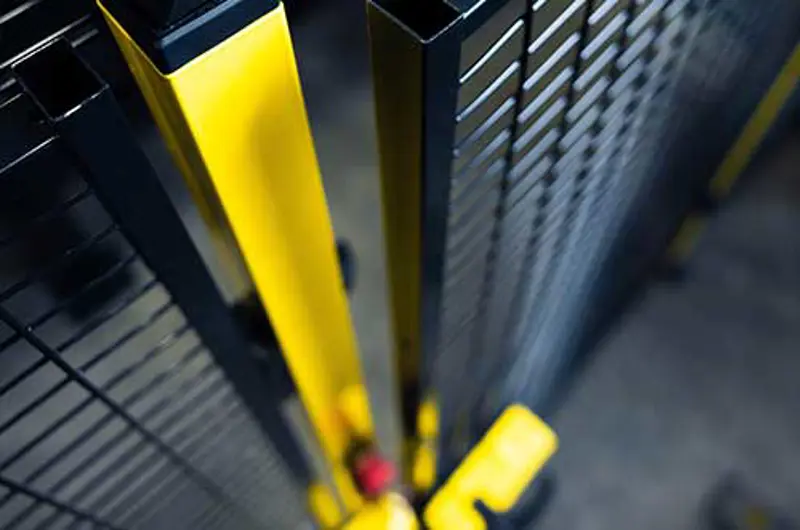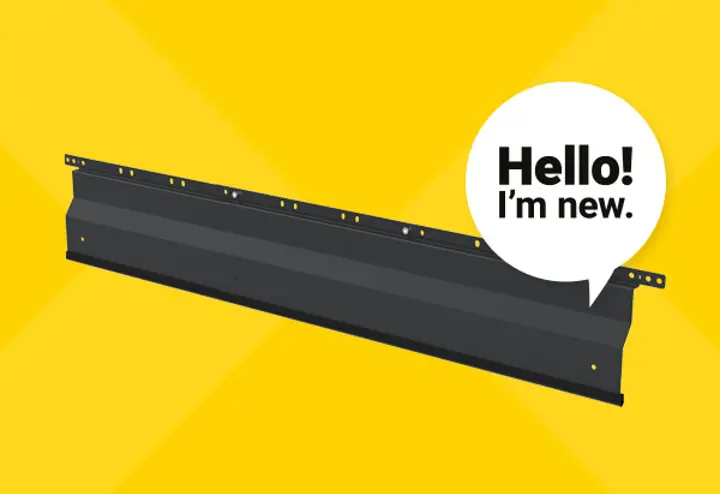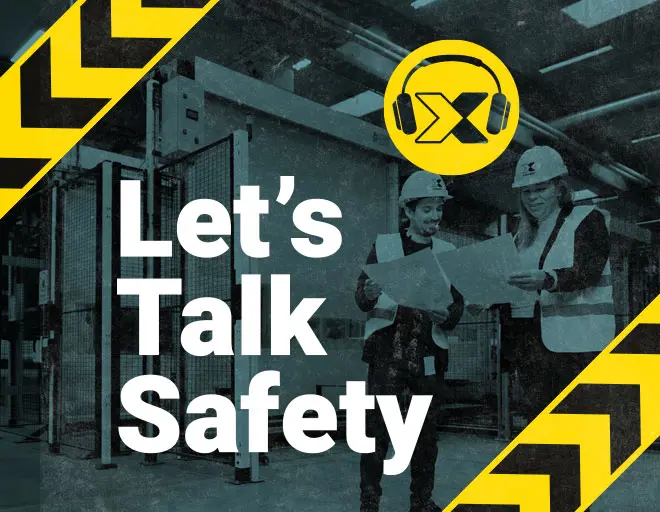Theoretically, reducing these risks is very simple. However, when put to practise, potential equalization and protective bonding (the combination is referred to as “protective equipotential bonding”) mean quite some effort. Often all posts and fence panels must be drilled, then a contact sleeve must be fitted, and the elements be connected by means of earth wires to a protective bonding conductor laid along the entire fence (the bonding conductor is shown in orange colour in the illustration).
No wonder, many shy away from such effort and expense. The argument against it often is that the risk is low and the requirements in the standards are not 100 % clear. One cannot easily contradict the latter argument.
What standards say
ISO 14120:2015 in section 5.13 says: “Where guards are made of electrically conductive material and used in electrically powered machines, they might need to be considered as ‘extraneous conductive parts of the machine’ according to IEC 60204 1:2005, Clause 8.” That is almost clear, were it not for the “might need” in the sentence.
IEC 60204-1:2018 in section 8.1 contains figure 4 and a table explaining the features of a protective equipotential bonding system. The table contains a subheading that reads: “Parts connected to the protective bonding circuit which are not to be used as protective conductor.” Under this heading it lists among others: “extraneous conductive parts, e. g. metallic pipes, fences, ladders, handrails”.
Thereby, the standard indicates that it may be necessary to connect guard fencing and railing to the protective bonding system of machinery. That would be the case if they could be considered “extraneous conductive parts”; because these must be included in protective bonding.
Section 17.2 d), which mainly deals with the documentation of the electrical installation of a machine, lists guard fences and railing among the “extraneous conductive parts” connected to the protective equipotential bonding system of the machine, which can be touched simultaneously “in the vicinity of the machine (for example, within 2.5 m)”. But here, too, the standard does not expressly require connecting guard fencing to the protective equipotential bonding system. Surprisingly however, the text for Fig. 4 in the standard clearly states that such parts “are not to be used as protective conductor”. This appears a little ambivalent.
Decide during risk assessment
How can a reasonable decision be made regarding connection of guard fences and railing to the protective equipotential bonding system of machinery? On the one hand everyone wants to ensure maximum safety, but on the other hand exaggerated or even unnecessary cost should be avoided.
As always, where standards do not contain clear-cut requirements, risk analysis and evaluation are needed. These questions should be considered:
- Does the nature of the local electrical installation make it advisable to take additional safety measures, because the existing potential equalization system is insufficient?
- Could guard fencing and railing anchored to the floor take on substantial voltage, causing potential equalization currents to flow once they are touched? (That is, if the distance between a guard fence/rail and other conductive parts of the machine <2.5 m, and a person could touch the guard fence/rail and a conductive part at the same time.)
- Is it likely that electric devices like lamps, electric power-tools etc. will be used near guard fencing (e. g. for setting, retooling, cleaning, or maintenance work)?
The decision should be made by an electrician or electrical engineer based on the situation on site. Machinery systems can be quite different and the properties of factory buildings regarding potential equalization may vary substantially. Axelent considers it advantageous to include guard fencing and fall protection railing in the protective equipotential bonding of the respective system. However, the decision should be left to the manufacturer or the company operating the machinery system.
Whatever you decide in the individual case, Axelent has the suitable solution for the task
Our new potential equalization kit includes connecting elements that can be installed to the posts and fence panels. No time-consuming drilling of the metal components is needed!
The potential equalization kit also includes a connector allowing to fasten the earth wires supplied to a dedicated protective equipotential bonding conductor (the latter is not part of the kit because its design depends on the local installation conditions, e. g. the machinery system's size). It is best to install the protective equipotential bonding conductor along the fence in an X-Tray conduit. This is a simple and smart solution reducing the expense and effort when comparted to conventional installation methods.












